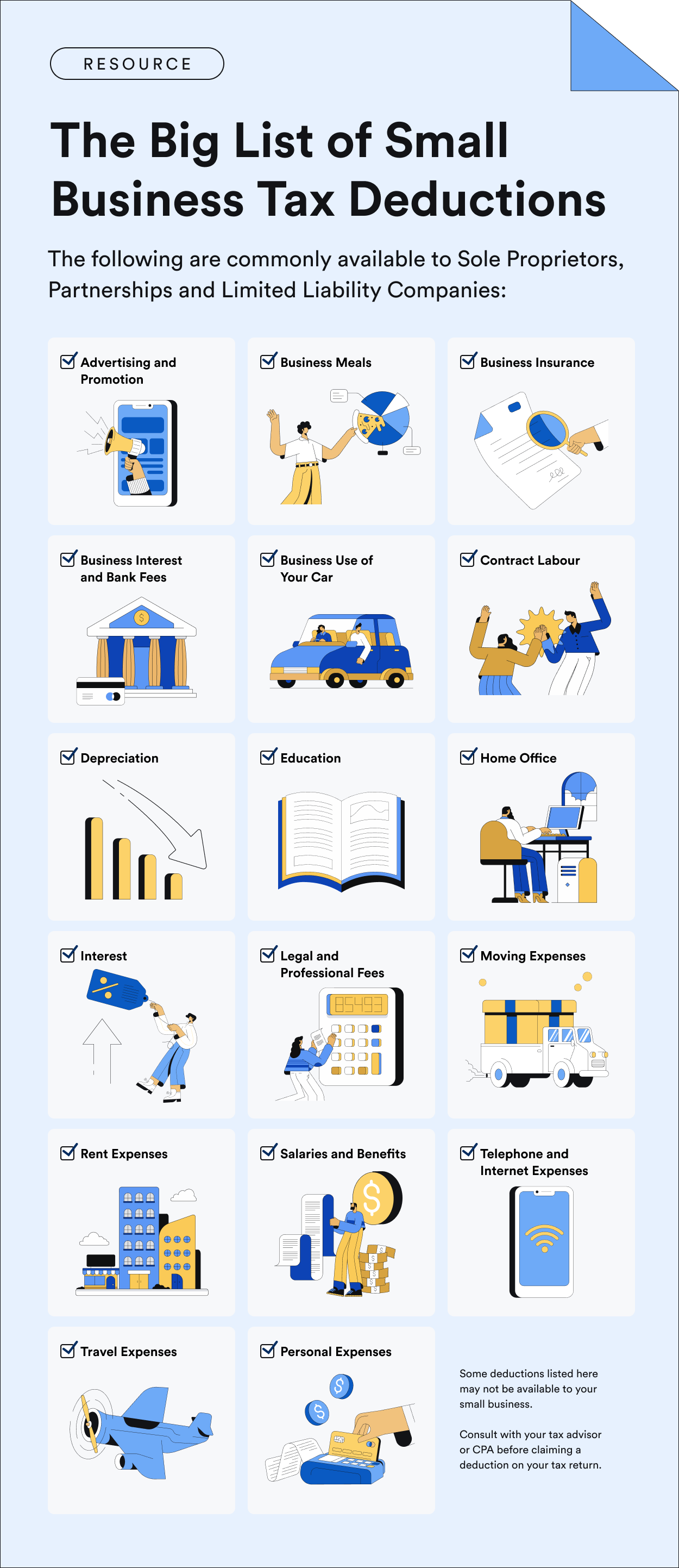Main Points
- The Employee Retention Tax Credit (ERTC) is a resource that business owners can still access and it can greatly decrease tax liabilities.
- Small businesses have the opportunity to take advantage of a variety of tax credits such as health care, retirement plan startup, and disabled access credits.
- Tax credits directly decrease your tax bill, making them more beneficial than deductions.
- Using specialized tax credit services can help you get the most out of your benefits and ensure you are following the rules.
- Working with tax professionals can assist you in understanding complicated tax laws and making the most of your credit claims.
Understanding Small Business Tax Credits
Operating a small business comes with many obstacles. One of the most difficult is effectively managing finances, particularly when it comes to taxes. But there is a silver lining: the government provides several tax credits specifically created to help lessen the financial strain on small businesses. If used properly, these credits can be a game changer.

Tax credits and deductions are not the same. Deductions reduce the amount of income that is subject to tax, while credits reduce the tax itself. Therefore, credits can save you more money than deductions, dollar for dollar. It is essential for small businesses to fully utilize available tax credits.
We’ll dive into a few major tax credits that every small business owner needs to know about. I’ll walk you through the choices and demonstrate how you can use them to your advantage.
Exploring Important Tax Credits
Small businesses can take advantage of a variety of tax credits, each offering unique benefits and stipulations. Some of the most valuable credits are:
- Employee Retention Credit (ERTC): This credit is designed to encourage businesses to keep employees on their payroll during challenging times.
- Paid Leave Credit: Provides a tax credit for businesses that offer paid leave to employees.
- Small Business Health Care Credit: Helps businesses that provide health insurance to their employees.
- Retirement Plan Startup Credit: Supports businesses that start a retirement plan for their employees.
- Disabled Access Credit: Encourages businesses to make their facilities accessible to individuals with disabilities.
Importance for Small Business Growth
Utilizing these tax credits can be a powerful tool for growth. They not only reduce your tax liability but also free up capital that can be reinvested into the business. This might mean hiring more staff, purchasing new equipment, or expanding your services.
Crucially, tax credits can aid small businesses in maintaining a competitive edge. By lowering expenses, companies can provide customers with better prices or put money into enhancing their goods or services. As a result, comprehending and applying for these credits should be at the top of every small business owner’s to-do list.
Small Business Tax Credit Categories
Let’s take a closer look at the kinds of tax credits available and how they can be advantageous for your business.
Keeping Staff on Payroll
One of the most important credits available is the Employee Retention Credit (ERTC). It’s meant to motivate businesses to retain their employees during challenging periods, like economic recessions or health crises. This credit could be worth as much as $7,000 per employee every quarter, resulting in significant savings.
Your business must have suffered a substantial drop in revenue or have been fully or partially shut down due to government orders to be eligible. The ERTC is still up for grabs, so it’s crucial to see if your business qualifies and seize this chance.
Compensated Leave Credit
Small businesses can also take advantage of the Compensated Leave Credit. This credit provides financial relief for businesses that offer compensated leave to their workers. It’s especially helpful for businesses that need to meet family and medical leave obligations.
Providing paid leave can boost employee happiness and loyalty, which is beneficial for both the company and its employees. By taking advantage of this credit, companies can counterbalance the expenses of providing paid leave.
Health Care Credit for Small Businesses
- Intended for small businesses that offer health insurance to their employees.
- Can cover as much as 50% of the premiums paid for employee health insurance.
- To be eligible, businesses must have less than 25 full-time equivalent employees with average yearly wages below a certain limit.
Health insurance is a significant cost for many businesses, but it’s also a vital benefit for attracting and retaining employees. The Health Care Credit for Small Businesses helps to mitigate these costs, making it more manageable for small businesses to provide this necessary benefit.
Offering health insurance can boost employee morale and productivity, and it may even lower turnover rates. This credit is a fantastic method to both support your staff and improve your financial performance.
Startup Credit for Retirement Plans
Encouraging your employees to save for their retirement is not only a good business practice, it can also help you attract and retain the best employees. The Startup Credit for Retirement Plans can help your business cover the costs of starting a retirement plan like a 401(k) or SIMPLE IRA.
Businesses can use this credit to cover up to $5,000 of startup costs for the first three years, making it an appealing choice for companies looking to improve their employee benefits package. By providing a retirement plan, businesses can show their dedication to the long-term financial health of their employees.
Credit for Disabled Access
Small businesses can take advantage of the Credit for Disabled Access, which is a great way to make your facilities more accessible to disabled individuals. This credit is meant to offset the expenses of making improvements that are in compliance with the Americans with Disabilities Act (ADA).
Many businesses may feel overwhelmed and concerned about the costs of implementing these changes. But there’s a financial incentive available to help offset these costs. The Disabled Access Credit can be used for necessary modifications like installing ramps, widening doorways, or updating restrooms for improved accessibility.
Businesses can get up to 50% of eligible expenses covered with this credit, up to $10,250 per year. It’s a savvy decision for businesses looking to improve accessibility and attract a broader customer base.
- Removing barriers that prevent access to the business is an eligible expense.
- Expenses such as sign language interpreters or adaptive equipment can be claimed for credit.
- Businesses qualify if they have total revenues of $1 million or less or no more than 30 full-time employees.
Business Energy Credit
The Business Energy Credit is a valuable incentive for businesses to invest in renewable energy sources as they become more environmentally conscious. This credit encourages businesses to use solar, wind, geothermal, or other renewable energy systems.
Businesses that choose to invest in renewable energy will not only lower their environmental footprint but also save on energy costs over time. The Business Energy Credit can cover as much as 30% of the cost of installing these systems, making it a financially appealing choice.
Obtaining Tax Credit Services
Applying for tax credits can be a complicated process, especially with the many rules and regulations that come with it. This is why obtaining specialized tax credit services can be a game-changer.

These services are designed to help you take full advantage of all available credits while staying compliant with tax laws. They provide the expertise needed to navigate the intricacies of tax credits, maximizing your savings and minimizing your stress.
Collaborating with Tax Experts
For small business owners, bringing a tax expert on board can be one of the smartest moves they make. These specialists have a profound knowledge of tax regulations and can offer custom recommendations that align with the unique requirements of your business.
Exploring Internet Tools
If you don’t want to hire a professional, there are many online tools to help you comprehend and apply for tax credits. The IRS website, for instance, provides comprehensive information on a variety of credits and how to claim them.
Using online tools and calculators can help you estimate how much you might save with different credits. These resources can help you decide which credits are worth pursuing.
Additionally, you can gain helpful knowledge and experience related to tax credits by participating in online forums and communities of small business owners. These communities can provide practical advice and support as you explore the world of tax credits.
Advantages of Specialized Assistance
For small business owners, specialized assistance in navigating tax credits can provide a multitude of advantages. It guarantees that you’re not leaving any money on the table and that you’re completely compliant with tax laws. For more insights, explore our quarterly tax filing guide.
Professional Advice
Tax experts provide professional advice, helping you to determine which credits you are eligible for and how to apply for them. They can also provide strategies to improve your tax situation, lowering your total liability.
Getting the Most Out of Your Tax Credits
By using professional help, you can ensure you’re getting the most out of your tax credits. These experts can help you plan and organize your business in a way that lets you take full advantage of the credits you’re eligible for, leading to more money saved.
Case Studies: How Businesses Have Successfully Used Tax Credits
Let’s look at some real-world examples of how businesses have successfully used tax credits to their advantage.
During the pandemic, a small manufacturing business was able to take advantage of the Employee Retention Credit. This allowed them to keep all of their employees, prevent layoffs, and even grow their operations once the economy began to bounce back.
A local eatery made use of the Business Energy Credit to implement solar panels. This smart move didn’t just cut their energy costs, it also drew in environmentally-aware patrons and improved their standing in the community.
“We didn’t just use the Business Energy Credit to save money; we used it to show our customers and the community that we’re committed to sustainability.” – Local Restaurant Owner
Case Studies
Take, for example, a small tech startup that took advantage of the Small Business Health Care Credit. They not only increased employee satisfaction by providing health insurance, but they also received a significant tax credit. This allowed them to put the savings back into research and development, speeding up their expansion.
Take for instance a retail business that utilized the Disabled Access Credit. They made their store accessible to individuals with disabilities, which not only broadened their customer base but also earned them a substantial tax credit. This action showed their dedication to inclusivity and enhanced their reputation in the community.
A mom-and-pop eatery took advantage of the Retirement Plan Startup Credit to initiate a 401(k) plan for their workers. This move helped them draw in and keep good employees, while also giving them a leg up on the competition. The tax credit absorbed the initial setup costs, making it a financially sound choice.
Finally, a local construction firm took advantage of the Business Energy Credit by installing energy-efficient lighting and solar panels. This credit helped them lower their energy costs and attract clients who are conscious about the environment, which in turn enhanced their business reputation.
- A small tech startup used the Small Business Health Care Credit to grow their business.
- A retail business used the Disabled Access Credit to expand its customer base.
- A family-owned restaurant used the Retirement Plan Startup Credit to attract new talent.
- A construction company used the Business Energy Credit to enhance their reputation.
Key Takeaways
The above examples show how tax credits can transform small businesses. The main lesson is that understanding and using these credits can lead to major financial savings and strategic benefits. For more insights, check out these tax considerations for veteran-owned businesses.
What’s more, businesses that take the initiative to research and apply for these credits can put the money saved towards growing their business, bettering their employee benefits, and improving their reputation in the community. The benefits go beyond just immediate financial gain, and offer long-term value and sustainability.
Conclusion: Taking Advantage of Tax Credits
Small business tax credits are a priceless chance to lessen tax responsibilities and boost expansion. By learning about the credits that are accessible and how to apply for them, companies can tap into significant monetary advantages. These credits offer not only instant savings but also aid in achieving long-term business goals.
Promoting Expansion and Adherence
By taking advantage of tax credits, small businesses can free up money that can be reinvested back into the business, promoting growth. Additionally, it ensures that businesses are adhering to tax laws, lowering the risk of audits and penalties. By seizing these opportunities, small businesses can flourish in a competitive market.
Commonly Asked Questions
If you’re a small business owner, you may have a few questions about tax credits and how they can help you. Here are some typical questions and their answers to help you understand this complicated subject.
Getting a handle on these elements will enable you to make knowledgeable choices about which credits to go after and how to make the most of your tax strategy.
Answering these queries will help you understand what you need to do to use tax credits effectively and save as much money as possible.
What are the key tax credits small businesses can take advantage of?
Key tax credits include the Employee Retention Credit, Paid Leave Credit, Small Business Health Care Credit, Retirement Plan Startup Credit, Disabled Access Credit, and Business Energy Credit.
All of these credits focus on particular business requirements, providing monetary incentives to aid in employee retention, health care, retirement planning, accessibility enhancements, and energy efficiency.
It is crucial to comprehend the eligibility prerequisites and advantages of each credit to maximize these opportunities.
How can I tell if my business qualifies?
Whether or not your business qualifies for tax credits depends on a variety of factors, including how big your business is, how many employees you have, and certain activities or expenses you’ve undertaken. It’s important to look at the criteria for each credit.
When you consult with a tax professional, they can offer you advice that’s tailored to your business’s unique circumstances. This way, you won’t miss out on any valuable credits.
Is it possible for small businesses to claim more than one tax credit?
Small businesses can indeed claim more than one tax credit, as long as they meet the necessary criteria for each one. Taking advantage of multiple credits can greatly lower the total amount of taxes you owe. For more guidance, check out this tax optimization guide for small businesses.
Grasping the way different credits interact and ensuring you’re following all the rules when claiming more than one credit is key.
Keeping records that are both precise and well-structured is crucial for backing up your credit claims and steering clear of potential problems during audits. For additional guidance, you can refer to this quarterly tax filing guide.
Getting help from a tax expert can make sure you have all the paperwork you need and that your filings are done correctly and promptly. For specialized guidance, consider exploring veteran-owned business tax considerations to ensure compliance and optimize your tax strategy.
So, in summary, small business tax credits are a potent weapon for reducing tax burdens and promoting business expansion. By knowing what credits are available and how to apply for them, you can access significant financial advantages and put your business on the road to success.

